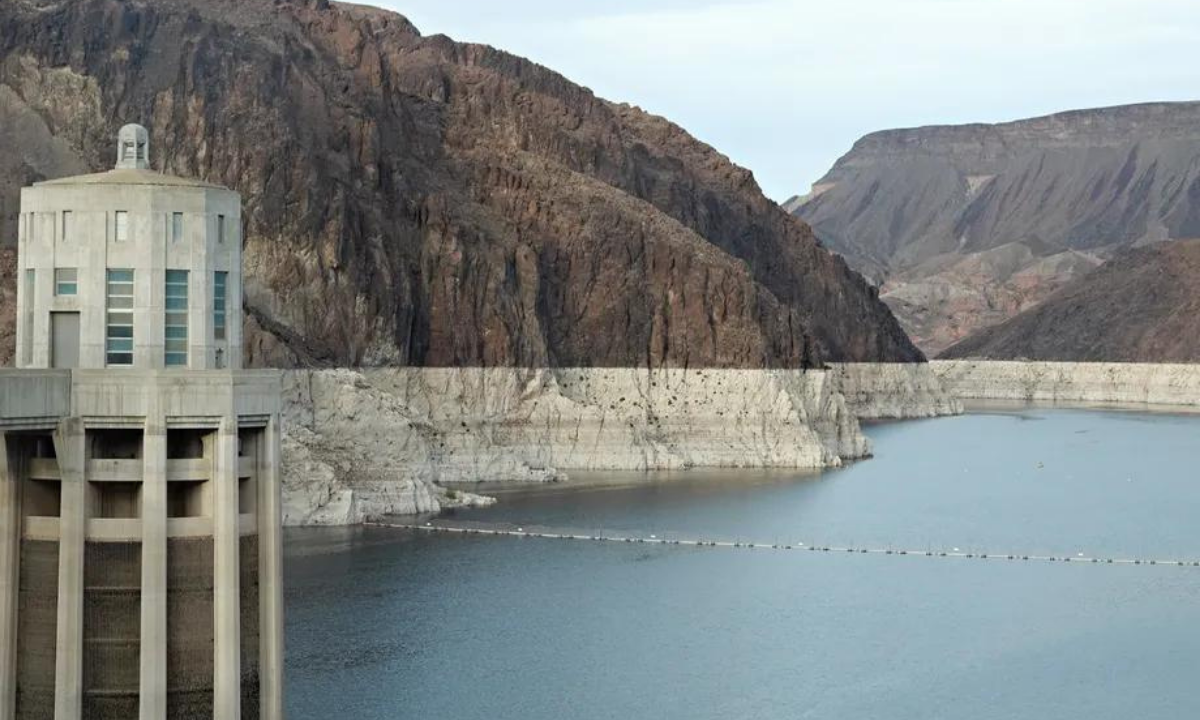Written by Blake Lopez
California, the state with the third most coastline in miles out of all states in the union, somehow, has a severe drought issue, which has only been exacerbated within the past couple of years due to a variety of reasons. These issues include: a lack of dams within the state, leaks in pipes in millions of homes, and terrible weather conditions caused by big businesses that try to spin the issue of climate change as something which the average American is causing, and not the billionaire playboys who waste millions every day with wasteful commodities. Our infamous drought can be combated in a variety of ways, such as: construction of several dams near high flood risk areas, state-paid repairs on Californian homes whose pipes are at risk of leaking, and putting the pressure on big businesses to clean up their act, and start contributing to combating climate change.
Foremost, the severe lack of dams in California has a great impact on the overall effect a drought cycle can have on a state and is one of the most expensive, but effective ways to combat the California drought cycle. U.S Secretary of the Interior Bruce Babbitt in an interview with ProPublica elaborates on how dams, as well as other irrigation collection techniques, could be used more efficiently to save water to combat the drought crisis, stating how “’ There is enough water in the West‚ [but] there are all kinds of agriculture efficiencies that have not been put into place’’”. This shows how a lack of proper irrigation techniques, as well as a lack of dams, has contributed to the larger problem of droughts in California, and if lazy Californian House members actually did their job efficiently, rather than sitting comfortably in their offices because they know they will never lose their seats because of the one-party rule in California, then California could somewhat be spared from the drought issue exacerbated by the lack of dams.
To add on, California also faces a huge issue regarding leaking pipes, which over time, can prove to be hugely wasteful of the precious water we do have, causing an even worse drought situation. I have a bit of experience in this field, as prior to me beginning to write, I worked with my father in the company which he owned, which was a water restoration company. We have traveled nearly thousands of miles to almost all areas of California, scratch Northern California; then again, the water issue in Northern California is not nearly as bad as it is in Southern California (maybe because they have Republican leadership primarily in Northern California, meaning they are somewhat competent at their job). Regardless, when we have traveled to homes to deal with water-damaged homes, we have noticed that a significant amount of the homes damaged by water were caused by leaking pipes. During one particular job in Los Angeles, it seems that over the timespan of months, hundreds of gallons of water leaking from pipes into the very space in between the dry board of a wall and the outside walls, leading to a moldy spot growing on the space in between, leading to overall damage in the house. Mind you, this occurred to several hundred other homes we have been to, and thousands more had less damaging claims, but still enough to call for renovations to the wall. This in turn can have huge impacts on the drought cycle in California, and if a program was designed that fixed pipes of homes over the age of 30, then hundreds of thousands of gallons of water could be saved, and the drought cycle’s effect could be weakened to such a degree, that it would almost be hysterical. To imagine some glue could save millions of Californian’s their homes, as well as their pocketbooks in the form of lessened water prices caused by the drought, is just hysterical, but also the sad truth regarding old homeownership and the price it costs to live in a pre-modern house in California.
Lastly, as most Americans know, large corporations put out an absurd amount of waste, as well as carbon emissions, affecting the weather of California, leading to less overall rainfall. However, even with this well-known fact, many legislators of California refuse to take action to combat these large corporations, who often lobby these legislators to be relaxed on environmental policies, while also lobbying to have harsher restrictions on the average citizen. It’s not like the average joe is out there emitting literally millions of carbon emissions while producing goods, so why should the average joe take the blame for rising emissions? Better yet, why should the average joe feel like he is personally responsible for the worsening weather conditions exacerbated by climate change? He is just trying to live his average life, not be criticized for eating a can of tuna. If lawmakers of California took five seconds to quit being bribed by large corporations and actually enforce the laws which they wrote on large businesses, then emissions would be down, climate change could be temporarily halted, rain would be more likely to drop from the sky, and the drought issue could be combated, though this idea is a far fetched one admittedly.
California is truly a great place to live. It has the best beaches, best people, best weather, best food, and so much more. However, with conditions, such as droughts, as well as the unmentioned wildfire seasons which happen every summer or so in California, the state is becoming a more inhospitable place for the average American. With such economic and environmental tolls caused by the drought, it seems that it is getting harder and harder to live in California; as water/utility prices rise as a result of an unchallenged drought season, as well as natural ravines and beds of water infamously begin to contract upon themselves, leading to smaller lakes and rivers as a result in the state. However, if the state of California was to follow through with the creation of more dams, programs to fix leaky pipes, and challenge the power of wasteful big businesses, then the Golden State could continue to shine like it was supposed to all the way back on September 9, 1850.
Photo Cred: Paul Rovere / Getty Images




